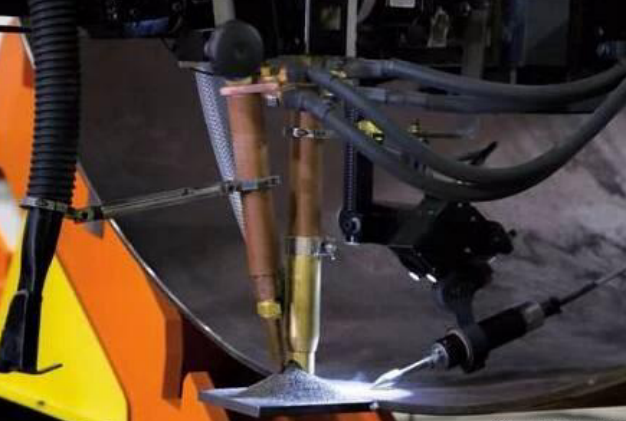
Selection of Flux and Wire for Submerged Arc Welding
Choosing the right flux and wire for a particular submerged arc welding process is critical to achieving the best results with that process. While the submerged arc welding process alone is highly efficient, productivity and efficiency can even be improved based on the wire and flux used. Flux not only protects the weld pool, but also contributes to the improvement of the mechanical properties and productivity of the weld. Flux formulation is a huge influence on these factors, affecting current carrying capacity and slag release. Current carrying capacity means that the highest possible deposition efficiency and high quality weld profile can be obtained. The slag release of a particular flux affects flux selection, as some fluxes are more suitable for some solder designs than others.

Flux selection options for submerged arc welding include active and neutral types of welding. A fundamental difference is that active fluxes change the chemistry of the weld, while neutral fluxes do not. Active flux is characterized by containing silicon and manganese. These elements help maintain weld tensile strength at higher heat inputs, help welds remain smooth and smooth at higher travel speeds and provide good slag release. Overall, activated flux can help reduce the risk of poor solder quality, as well as expensive post-solder cleaning and rework. But keep in mind that active flux is usually best for single or double pass soldering. Neutral fluxes are better for large, multi-pass welds because they help avoid the formation of brittle, crack-sensitive welds.
There are many wire options for submerged arc welding, each with pros and cons. Some wires are formulated for welding at higher heat inputs, while others are specifically designed to have alloys that aid the flux in weld cleaning. Note that the chemistry of the wire and heat input interact to affect the mechanical properties of the weld. Productivity can also be greatly improved through filler metal selection. For example, using a metal-cored wire with a submerged arc welding process can increase deposition efficiency by 15% to 30% compared to using a solid wire, while also providing a wider, shallower penetration profile. Due to its high travel speed, metal-cored wire also reduces heat input to minimize the risk of weld distortion and burn through.
Submerged arc welded steel pipe: A steel pipe with one or two straight welds, or one spiral weld, manufactured by the submerged arc welding process. Among them, the steel pipe with straight seam is straight seam submerged arc welded steel pipe (LSAW pipe), and the steel pipe with spiral seam is spiral submerged arc welded steel pipe (SSAW).


